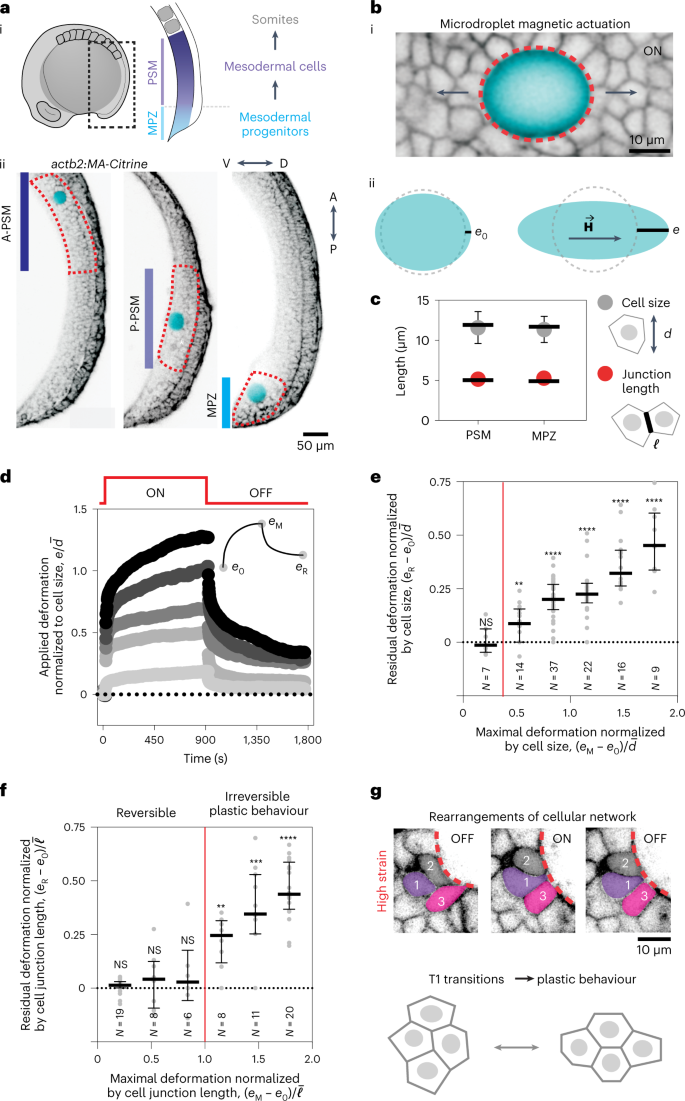地球上で最も豊富なイオンのひとつが関与する「隠れた状態」のヒントを見出した研究者たち Researchers find hints of a ‘hidden state’ involving one of Earth’s most abundant ions
2022-12-29 カリフォルニア大学サンタバーバラ校(UCSB)
リン酸塩は、カルシウムと結合すると小さな分子クラスターを形成し、細胞や骨に鉱物の沈着物を形成するようになる。ハン教授とカリフォルニア大学サンタバーバラ校のマシュー・ヘルゲソン教授(リンクは外部サイト)、ニューヨーク大学のアレクセイ・イェルショー教授(リンクは外部サイト)は、カリフォルニア大学サンタバーバラ校のマシュー・フィッシャー教授(リンクは外部サイト)が提案した対称的なリン酸クラスターにおける量子現象の解明を目指して研究と特性評価の準備を進めていた。核磁気共鳴(NMR)分光法と低温透過電子顕微鏡(クライオTEM)を使って、カルシウムのない状態のリン酸イオンをスキャンするというものである。
しかし、このプロジェクトに参加したUCSBとNYUの学生たちは、水溶液中の天然同位体リン31の濃度と温度を変えて参考データを収集していたところ、その結果が予想と一致しないことがわかった。
「私たちは、リンのNMR信号が、温度が高くなるほどピークが狭くなる単純なものだと予想していました。「しかし、意外なことに、私たちは、予想とは全く逆の、幅が広がるスペクトルを測定したのです”
この直感に反する結果によって、研究チームは新たな道を歩み始め、分子レベルの原因を突き止めるために、次々と実験を繰り返しました。そして、1年がかりで次々と仮説を排除していった結果、結論が出た。リン酸イオンは、さまざまな生物学的条件下でクラスターを形成しており、そのクラスターは分光学的に直接検出されないため、これまで観測されなかったのだろう。さらに、測定結果から、これらのイオンは目に見える「自由な状態」と暗い「集合した状態」を交互に繰り返していることが示唆され、そのためシグナルは鋭いピークではなく、幅が広くなっていることがわかりました。
さらに、共同研究者のメソポタミア・ノボタルスキーによると、温度が上昇するにつれて、これらの集合状態の数も増加しており、これも温度依存的な挙動であることがわかった。
「これらの実験から得られた結論は、リン酸塩が脱水することで、リン酸塩が互いに接近するというものでした」と彼女は言う。低温では、溶液中のリン酸塩の大部分は水分子に付着し、その周囲に保護的な水膜を形成している。生体系でのリン酸塩の挙動を考える際には、通常、このような水和状態が想定される。しかし、ノヴォタルスキーは、高温になるとリン酸塩が水膜を脱いで、リン酸塩同士がくっつくようになると説明した。この概念は、リン酸塩の水膜を調べるNMR実験によって確認され、さらに、クライオTEM画像の解析によってクラスターの存在を確認し、共同研究者のジョシュア・ストラウブがリン酸塩集合体のエネルギー論をモデル化することによって検証された。
また、多くの生体分子成分にはリン酸基が含まれており、同様にクラスターを形成している可能性があります。したがって、これらのリン酸塩が自発的に集合できるという発見は、貝殻や骨格がどのようにして形成されるかというバイオミネラリゼーションや、タンパク質の相互作用など、他の基本的な生物学的プロセスに光を当てることになるかもしれません」。
アルツハイマー病では、脳内のタウタンパク質にリン酸基が付加され、神経原線維変化という神経変性の特徴を示す病変がよく見られます。研究チームは現在、リン酸カルシウムの集合に関する独自の研究だけでなく、リン酸の集合、遺伝子翻訳、修飾タンパク質の集合に対するpHの影響についても研究し、この集合の挙動をより深く掘り下げているところである。
<関連情報>
- https://www.news.ucsb.edu/2022/020799/overlooked-phenomenon
- https://www.pnas.org/doi/10.1073/pnas.2206765120
リン酸塩は一般的な水溶液中では分光学的に暗い状態集合体を形成する Phosphates form spectroscopically dark state assemblies in common aqueous solutions
Joshua S. Straub ,Mesopotamia S. Nowotarski,Jiaqi Lu ,Tanvi Sheth,Sally Jiao ,Matthew P. A. Fisher ,M. Scott Shell ,Matthew E. Helgeson,Alexej Jerschow,Songi Han
Proceedings of the National Academy of Sciences Published:December 29, 2022
DOI:https://doi.org/10.1073/pnas.2206765120

Significance
This study presents an unexpected discovery that phosphate-containing molecules form dynamic assemblies under common biologically relevant aqueous solution conditions. Phosphates are ubiquitous in the biological milieu in the form of free phosphate ions, phosphorylated proteins, RNA, DNA, ATP, the cell membrane, and calcium phosphate species en route to bone formation. The discovery that phosphate- containing species, including orthophosphates, can readily assemble in water is important for understanding the many complex processes in which they are involved and should be considered when studying their role in modulating biocatalysis, cellular energy balance, or the formation of biomaterials.
Abstract
Phosphates and polyphosphates play ubiquitous roles in biology as integral structural components of cell membranes and bone, or as vehicles of energy storage via adenosine triphosphate and phosphocreatine. The solution phase space of phosphate species appears more complex than previously known. We present nuclear magnetic resonance (NMR) and cryogenic transmission electron microscopy (cryo-TEM) experiments that suggest phosphate species including orthophosphates, pyrophosphates, and adenosine phosphates associate into dynamic assemblies in dilute solutions that are spectroscopically “dark.” Cryo-TEM provides visual evidence of the formation of spherical assemblies tens of nanometers in size, while NMR indicates that a majority population of phosphates remain as unassociated ions in exchange with spectroscopically invisible assemblies. The formation of these assemblies is reversibly and entropically driven by the partial dehydration of phosphate groups, as verified by diffusion-ordered spectroscopy (DOSY), indicating a thermodynamic state of assembly held together by multivalent interactions between the phosphates. Molecular dynamics simulations further corroborate that orthophosphates readily cluster in aqueous solutions. This study presents the surprising discovery that phosphate-containing molecules, ubiquitously present in the biological milieu, can readily form dynamic assemblies under a wide range of commonly used solution conditions, highlighting a hitherto unreported property of phosphate’s native state in biological solutions.


